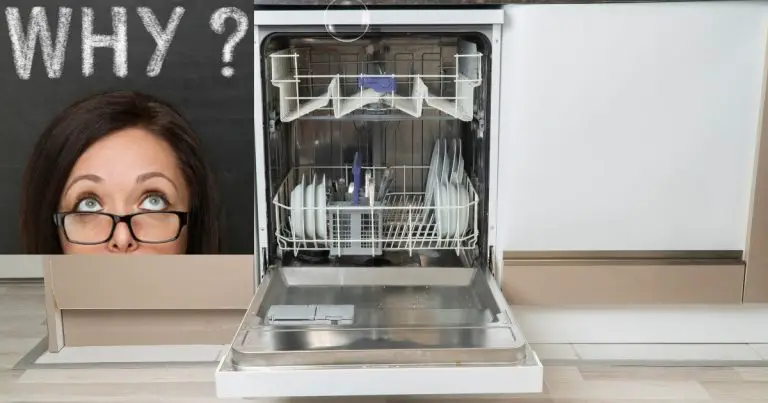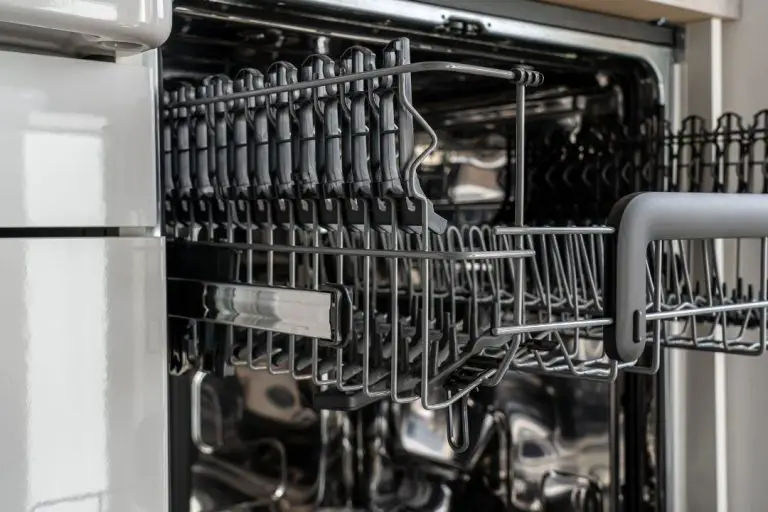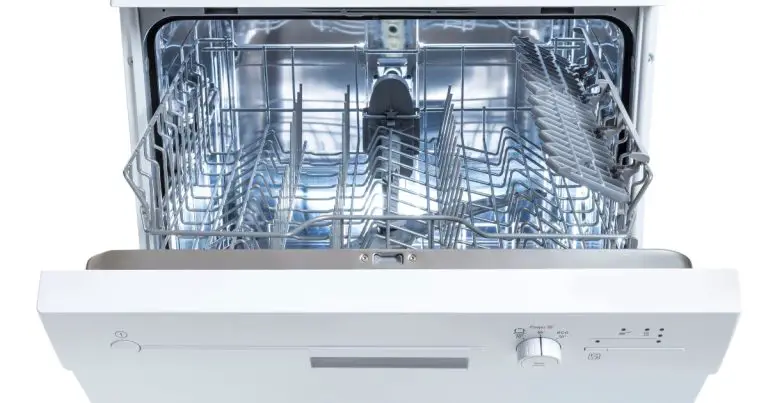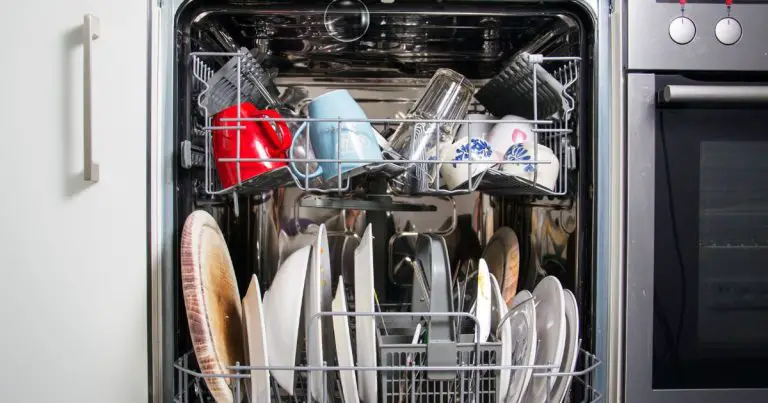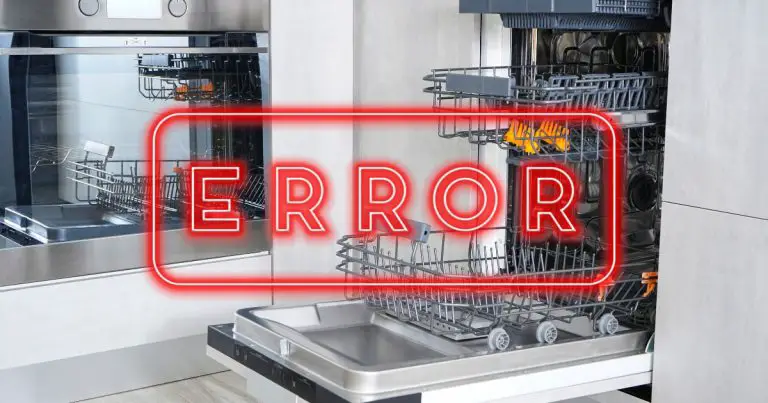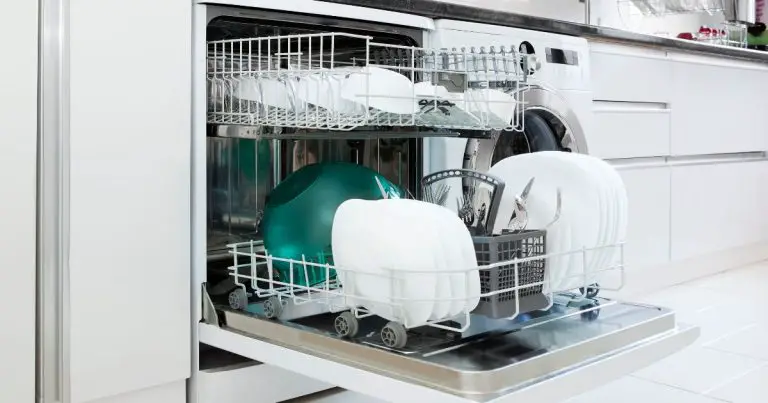GE Dishwasher Won’t Start But Has Power (100% Solved!)
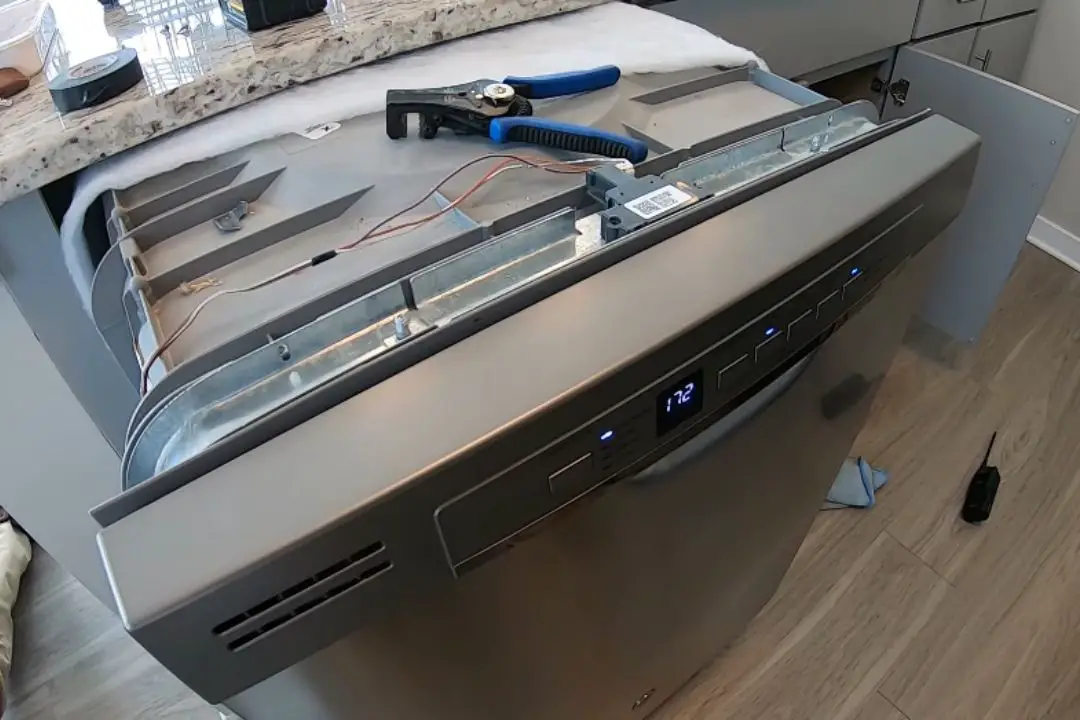
Are you staring at your GE dishwasher with frustration because GE Dishwasher Won’t Start But Has Power? Are you tired of the endless cycle of resetting, troubleshooting, and checking the control panel? It’s time to take a deep breath and delve into the underlying concerns that could be causing your dishwasher to malfunction.
It’s a common scenario for any homeowner who owns a GE dishwasher to experience this dilemma.
You press the start button, and nothing happens. You attempt to troubleshoot by resetting the appliance, only to be met with more disappointment.
Before you start to panic or reach for your toolbox, you must understand that there could be several underlying factors causing this issue.
A dishwasher that won’t start but has power points to several possible problems, including a malfunctioning door latch that’s preventing the dishwasher from starting or an electrical issue stemming from a circuit breaker problem.
If you’re experiencing a motor malfunction, it’s another possible reason. However, you need not worry, as there are ways to determine the root cause of the problem.
10 Reasons GE Dishwasher Won’t Start But Has Power:
| Issue | Possible Cause | Solution |
|---|---|---|
| 1. No water | Water supply is turned off or blocked | Check water supply valve and ensure it’s open and unclogged |
| 2. Door not latched properly | Door switch not engaged | Close the door firmly to ensure switch engages |
| 3. Faulty door switch | Door switch is defective | Replace the door switch |
| 4. Control panel malfunction | Control panel is not responding | Reset the control panel or replace it if necessary |
| 5. Timer or electronic control board malfunction | Timer or control board is defective | Replace the timer or control board |
| 6. Overheating | Dishwasher has overheated | Allow the dishwasher to cool down and reset the control panel |
| 7. Clogged filters | Filters are clogged with debris | Clean the filters thoroughly |
| 8. Faulty motor | Motor is defective | Replace the motor |
| 9. Burnt out heating element | Heating element is burnt out | Replace the heating element |
| 10. Faulty thermal fuse | Thermal fuse has blown | Replace the thermal fuse |
When a dishwasher won’t start but has power, it can be a source of frustration. Not being able to get your dishes clean is an annoyance, and trying to identify the cause can be difficult.
There are several potential problems that could be causing the issue, and we will explore some of the most common solutions.
One potential issue is a faulty door switch:

This switch can cause the dishwasher to think that the door is open and therefore not start.
To diagnose this issue, open the door and press the door switch by hand while reaching up inside the dishwasher with a tool. If it doesn’t make a clicking sound, it needs to be replaced.

Another possible cause could be a faulty timer:
If the timer is not operating correctly, it may not be sending the right signal to the dishwasher to start.
To diagnose this issue, the timer needs to be tested with a multimeter. If it doesn’t measure continuity, it should be replaced.
A third potential cause for a dishwasher not starting but having power is a faulty float switch:
The float switch is triggered when the dishwasher fills with water and will not allow it to start if the float switch is stuck in the wrong position.
To diagnose this issue, you will need to check the switch with a multimeter and make sure it is operating correctly. If it does not measure continuity, it needs to be replaced.
Finally, a fourth potential cause of a dishwasher not starting but having power is a faulty motor.
If the motor is not working correctly, it may not be sending the right signal to the dishwasher to start.
You can diagnose this issue by running a multimeter across the motor to verify that it is operational. If it is not, then the motor needs to be replaced.
Troubleshooting Steps to Identify the Cause of the Problem:
If you’re having trouble with your GE dishwasher not starting, don’t panic just yet.
There are several things that could be causing the issue, but with a little troubleshooting, you may be able to identify the cause and fix it yourself.
First, check that the dishwasher is receiving power.
Make sure it’s plugged in and the circuit breaker hasn’t been tripped. If the power is on, try resetting the dishwasher by unplugging it for a few minutes and then plugging it back in.
Next, examine the control panel.

Are any of the buttons stuck or not responding when pressed? If so, it may be a problem with the control panel itself.
If the control panel appears to be functioning properly, check the door latch. Is it securely closed? If not, the dishwasher won’t start.
Electrical issue:
If all of these steps check out, it’s possible that there’s an electrical issue somewhere within the dishwasher. This could be caused by a malfunctioning motor or a problem with the start button.
Try running a diagnostic test:
To identify the cause of the problem, you can try running a diagnostic test. Each model of GE dishwasher has a slightly different process for running the test, so consult the user manual for specific instructions.
If you’ve tried all of these troubleshooting steps and still can’t identify the cause of the problem, it may be time to call in a professional technician.
They’ll be able to pinpoint the issue and make the necessary repairs to get your dishwasher up and running again.
How to Diagnose the Issue: Testing the Electrical Components in the Dishwasher?
If your GE dishwasher won’t start, it may be due to an electrical issue. Fortunately, there are several ways to troubleshoot and diagnose the issue. The first step is to check the power to the unit.
Make sure the power is on by resetting the circuit breaker. Then, check that the door latch is working properly. If these two items are in order, it is likely an electrical issue within the unit.
The next step is to test the electrical components of the dishwasher. This includes the control panel, start button, and motor. You can use a diagnostic test to check the functionality of each.
If the control panel or start button are faulty, it may be necessary to replace them. If the motor is malfunctioning, it may be necessary to replace the entire unit.
Step-by-Step Guide to Resetting the Dishwasher:
Resetting a GE dishwasher when it won’t start can be a tricky process.
- The first step is to troubleshoot the issue and eliminate potential causes.
- Check the power supply to make sure the dishwasher has power.
- Check the control panel and circuit breaker to ensure they are on and functioning properly.
- The next step is to ensure the door latch is working, as this can be a factor in the dishwasher not starting.
- If the power supply, control panel, and door latch all seem to be working correctly, there may be an electrical issue, such as a motor malfunction or some other issue.
- The next step is to use the start button to run a diagnostic test on the dishwasher.
- Push and hold the start button for at least five seconds to begin the diagnostic test.
- This test will identify any errors or problems that may be preventing the dishwasher from starting.
- After the test is complete, the dishwasher should display a code or error message.
Follow the instructions for the particular code or message in order to reset the dishwasher.
How to Check the Water Supply and Drain Hoses?
If you’re encountering problems with your GE dishwasher, it may be tempting to jump straight to checking the control panel or circuit breaker.
However, one commonly overlooked component that could be causing an issue is the water supply and drain hoses.
These hoses are responsible for bringing in clean water and removing dirty water from your dishwasher, and any issues with them can cause a variety of problems.
To start, check the water supply hose by turning off the water supply valve and disconnecting the hose from the dishwasher. Inspect the hose for any cracks, kinks, or other damage that could be causing a blockage or leak.
Clean any debris out of the hose and reconnect it securely. Then, turn the water supply valve back on and test the dishwasher to see if the water supply is working properly.
If the water supply hose appears undamaged, move on to the drain hose.
- First, check for any obvious issues such as kinks or bends in the hose that could be preventing proper drainage.
- Next, remove the hose from the dishwasher and inspect it for any blockages or damage.
- If you find debris or a clog, clear it out using a plumbing snake or similar tool.
- Reconnect the hose securely and test the dishwasher to see if the drain is working properly.
By checking the water supply and drain hoses, you may be able to identify and resolve issues that could be preventing your dishwasher from starting or functioning properly.
In some cases, a simple repair or replacement of these hoses could help you avoid costlier repairs down the line.
While this may not always be the solution, it’s an important step to take when troubleshooting your GE dishwasher.
Don’t overlook the importance of these small but crucial components in your dishwasher’s functionality.
How to Replace the Dishwasher Control Board?
If your GE dishwasher won’t start, the control board may need to be replaced. This control board is responsible for controlling power, resetting the dishwasher, and troubleshooting any issues that may arise.
Replacing the control board is a complicated process and requires you to access the control panel, check the circuit breaker, disconnect the door latch, and test the electrical components.
The first step when replacing the control board is to access the control panel. This will involve removing the top cover and unscrewing the control board.
Once removed, you can check for any loose wiring or damaged components. If everything looks okay, you can proceed to the next step.
Next, you need to check the circuit breaker. If the circuit breaker has tripped, reset it and see if that solves the problem. If not, you’ll need to move onto the next step.
Disconnect the door latch and check for any electrical issues. This could be caused by loose wiring, a faulty motor, or a malfunctioning start button. If you find any issues, you’ll need to repair or replace them.
Finally, you’ll need to conduct a diagnostic test to ensure that the control board is functioning properly.
Once you’ve completed the test, you can reconnect the control board and test the dishwasher to make sure it’s working correctly.
Replacing the dishwasher control board is a complicated process, but if you follow the steps outlined above, you should be able to get your dishwasher back up and running in no time.
Tips for Preventing Future Issues with GE Dishwashers:
Maintaining a GE dishwasher is not as hard as it may seem.
There are several tips that can help prevent future issues with the appliance.
- First, if the dishwasher doesn’t start upon pressing the start button, it could be a power issue.
- Check to make sure the power cord is properly plugged into the wall outlet, and reset the circuit breaker if necessary. If the dishwasher is receiving power, it could be a door latch issue.
- Make sure the door is properly closed and latched before attempting to start the dishwasher.
- If the issue is still not resolved, it could be an electrical issue.
- Check to make sure all of the wires are properly connected and the control panel is properly functioning.
If the above steps do not work, there may be an issue with the motor. The motor can be tested by running a diagnostic test.
If the diagnostic test does not yield any results, then there could be a problem with the motor itself. In this case, it is best to contact a repair technician.
Lastly, if the dishwasher does not start after trying these tips, it could be a more serious issue.
This could include something like a faulty start button or a more serious mechanical malfunction. If this is the case, it is best to contact a professional appliance repair technician.
FAQs:
My GE dishwasher has power, but it won’t start. What could be the problem?
There could be several reasons why your GE dishwasher won’t start, including a faulty door switch, control panel malfunction, timer or electronic control board malfunction, clogged filters, overheating, a faulty motor, a burnt-out heating element, or a blown thermal fuse.
What should I do if my GE dishwasher won’t start?
First, ensure that the dishwasher is properly connected to a power source and the circuit breaker is not tripped. If the dishwasher has power but still won’t start, check the door switch and control panel for any signs of malfunction. You can also try cleaning the filters, resetting the control panel, or replacing any faulty parts.
How do I clean the filters on my GE dishwasher?
To clean the filters, remove the bottom rack and locate the filters at the bottom of the dishwasher. Remove the filters and rinse them thoroughly under running water to remove any debris. You can also use a soft-bristled brush to remove any stubborn dirt or grime.
Can I replace the faulty parts on my GE dishwasher myself?
It’s always recommended to consult with a professional appliance repair technician before attempting any repairs on your dishwasher. Some repairs may require specialized tools and expertise that you may not have, and attempting to repair the dishwasher yourself could cause further damage.
How often should I maintain my GE dishwasher?
It’s recommended to clean the filters on your GE dishwasher at least once a month to ensure optimal performance. You should also check the dishwasher for any signs of wear and tear and schedule regular maintenance with a professional technician to prevent any major issues.
Conclusion
If you have experienced your GE dishwasher not starting but still having power, don’t panic.
With a few steps, you can troubleshoot the issue and get your dishwasher up and running again.
If these steps don’t do the trick, you can always call a professional to help you out.
Don’t forget to check your warranty and see if you can get the repair covered. With a bit of luck, you can get your dishwasher back in working order quickly and easily.

